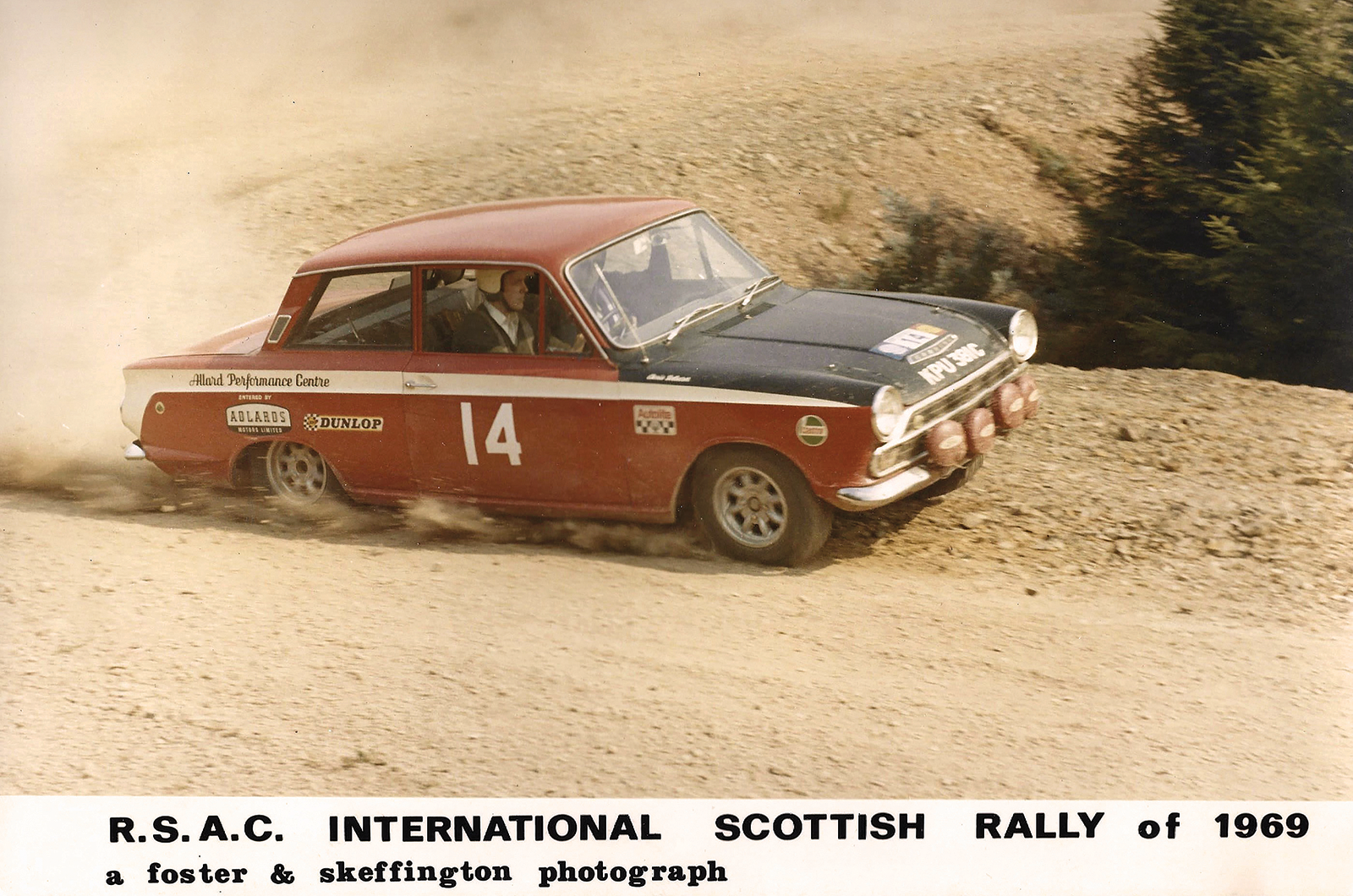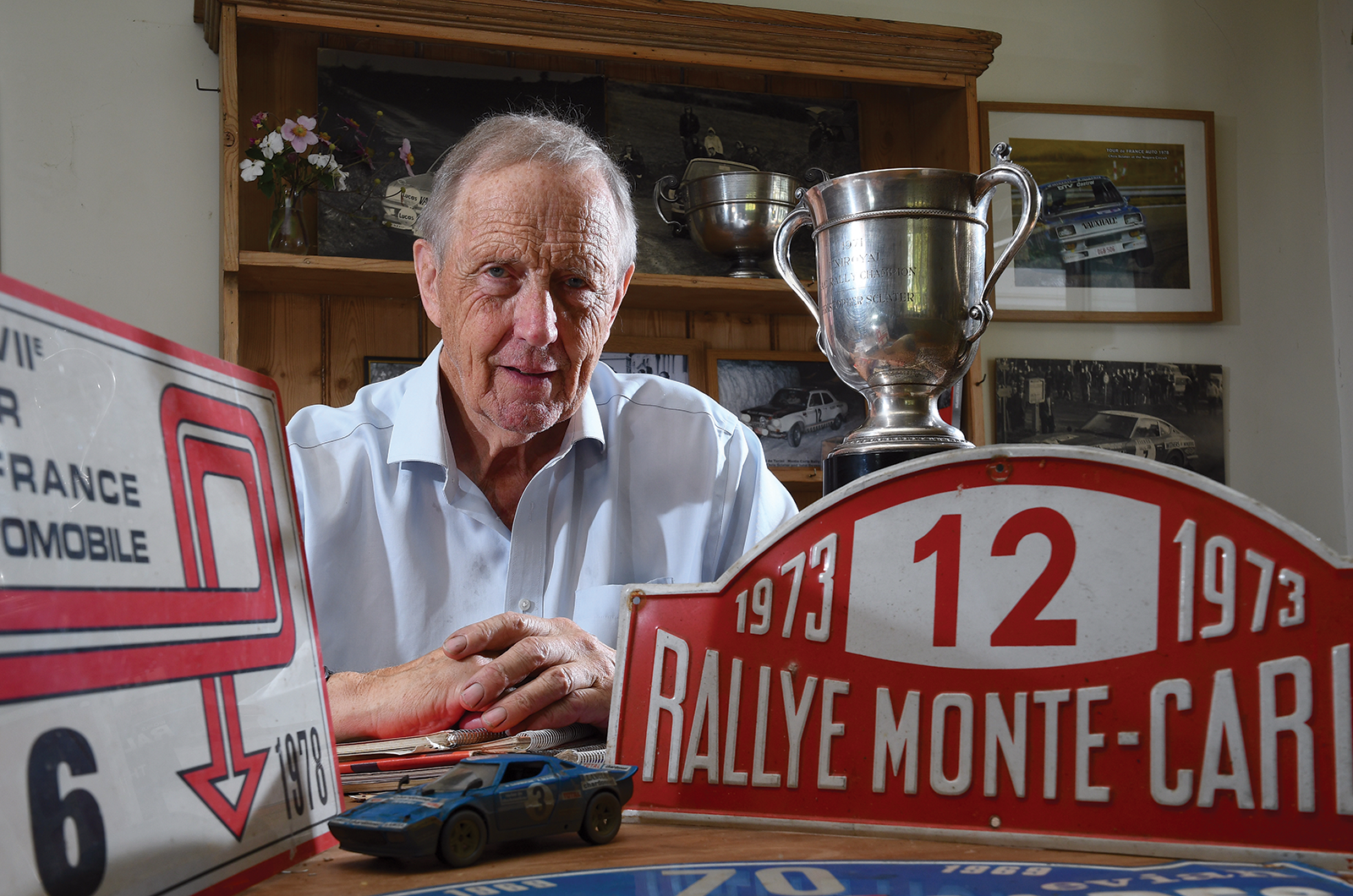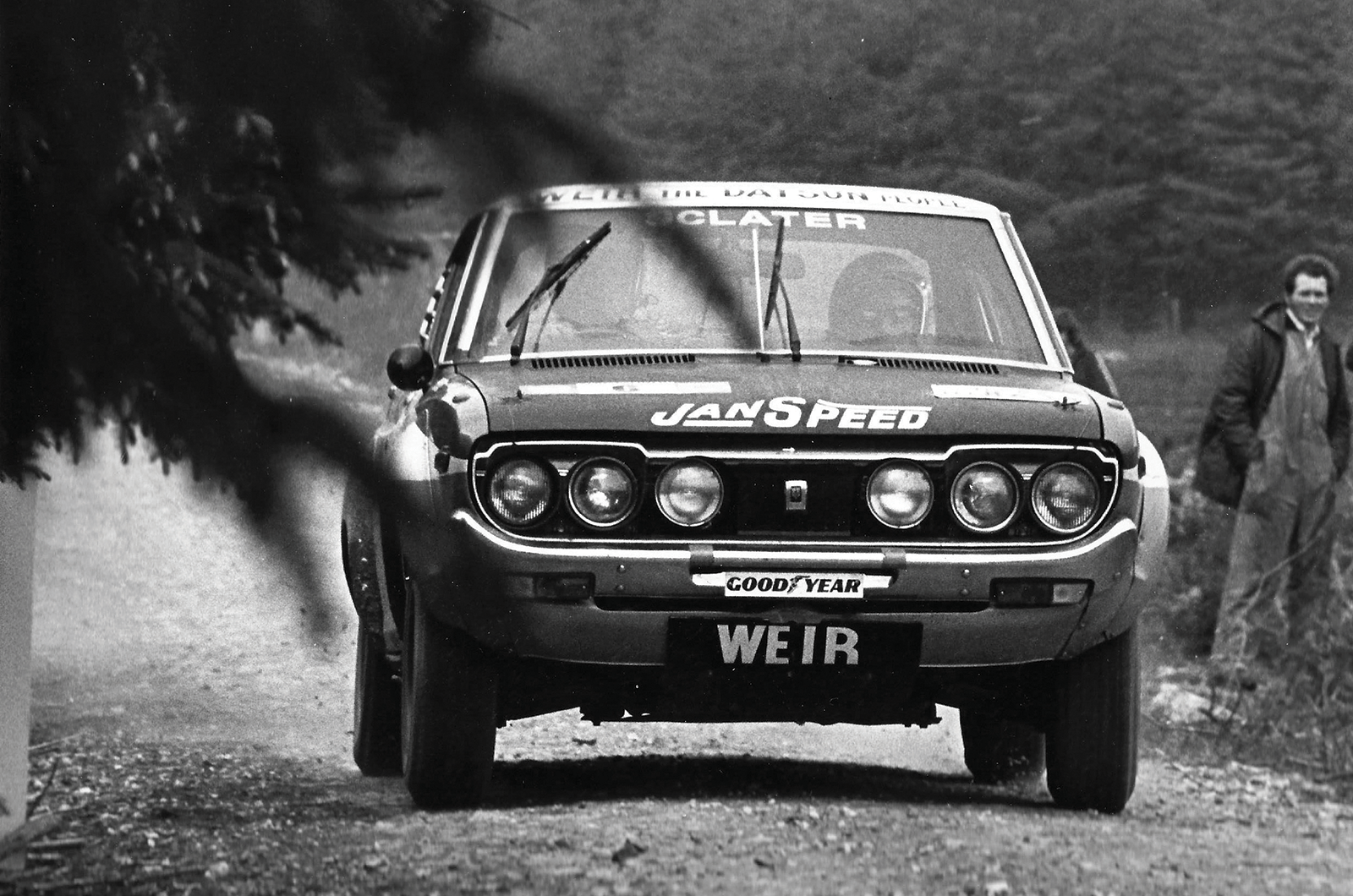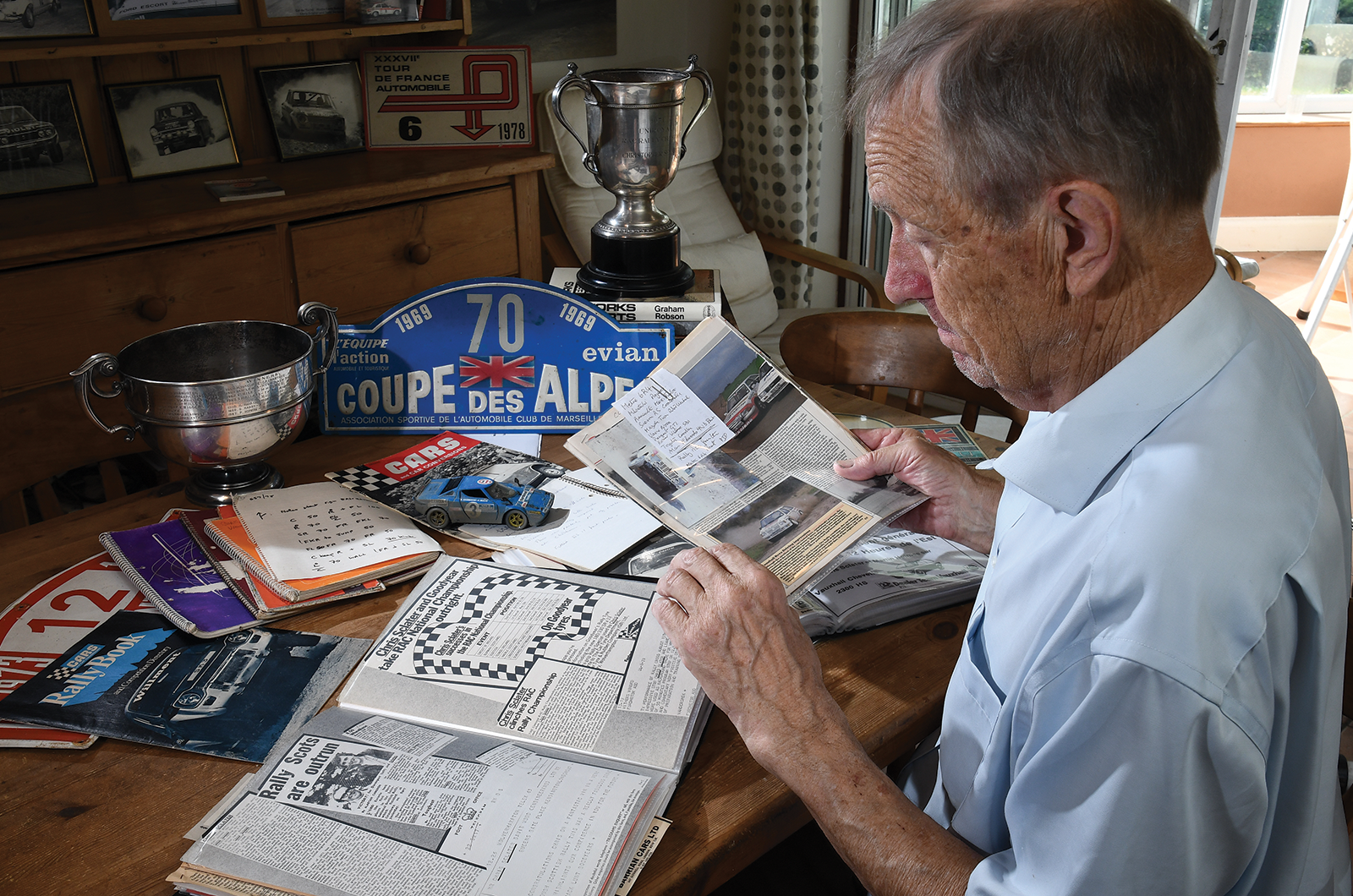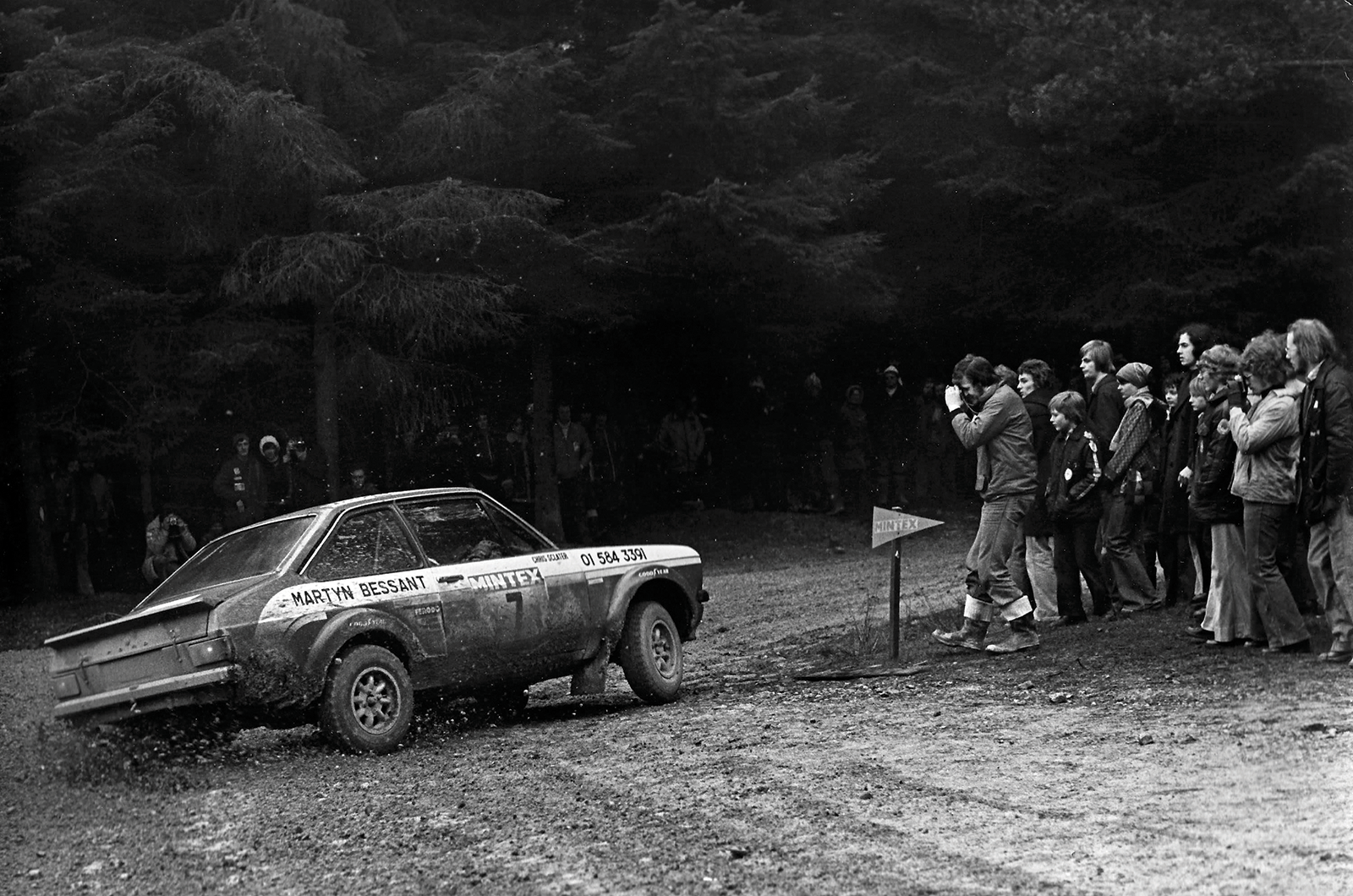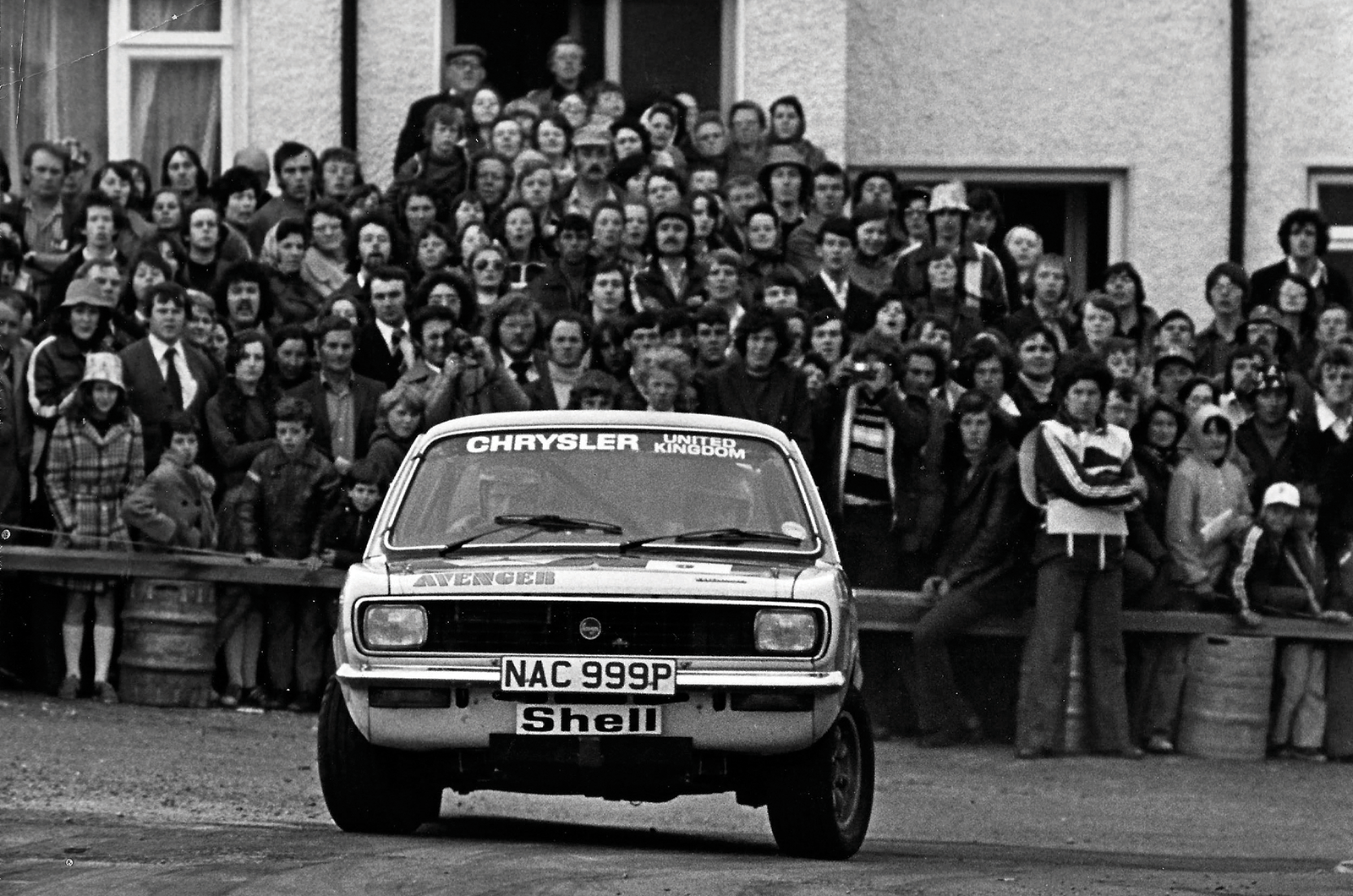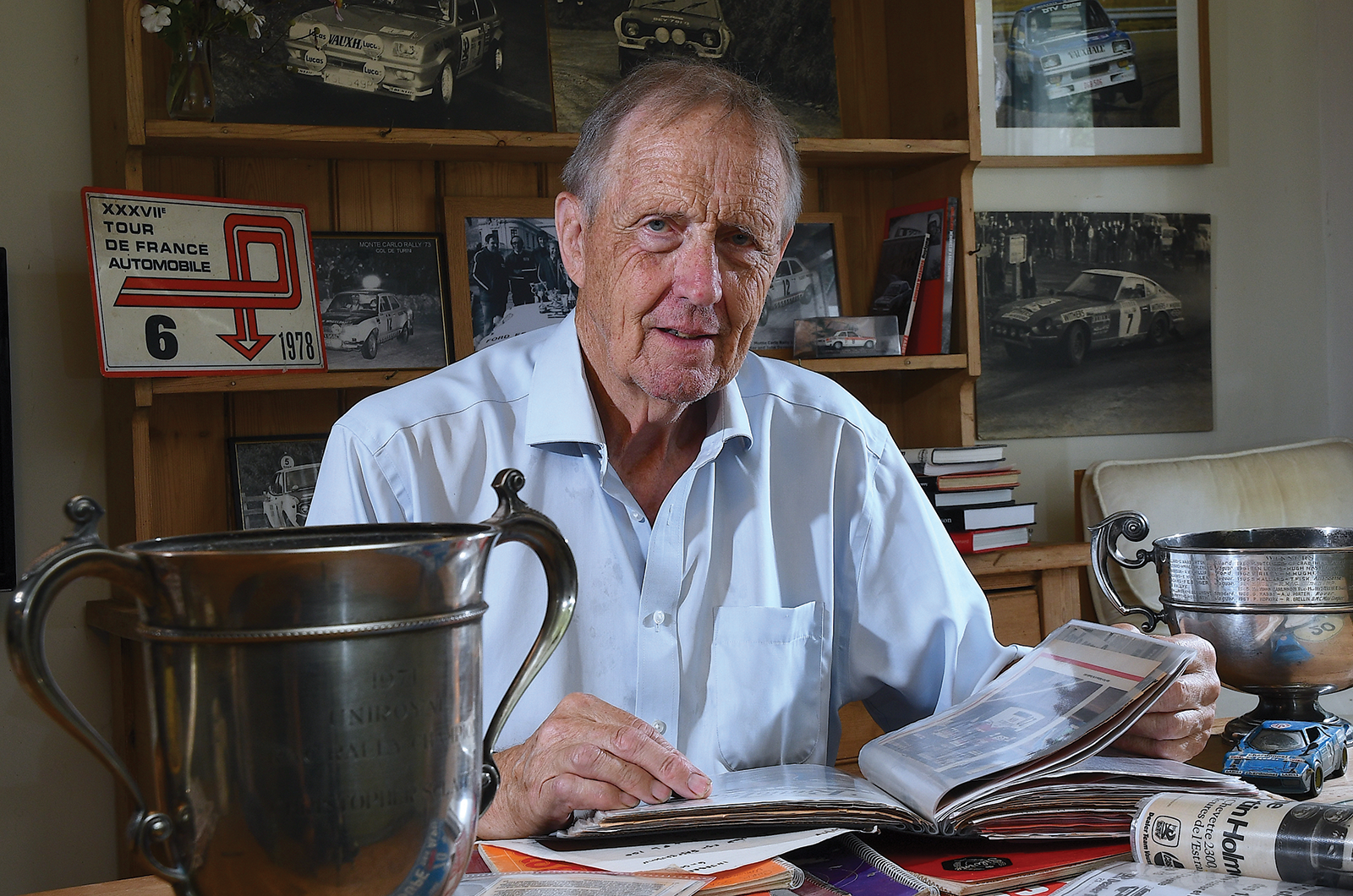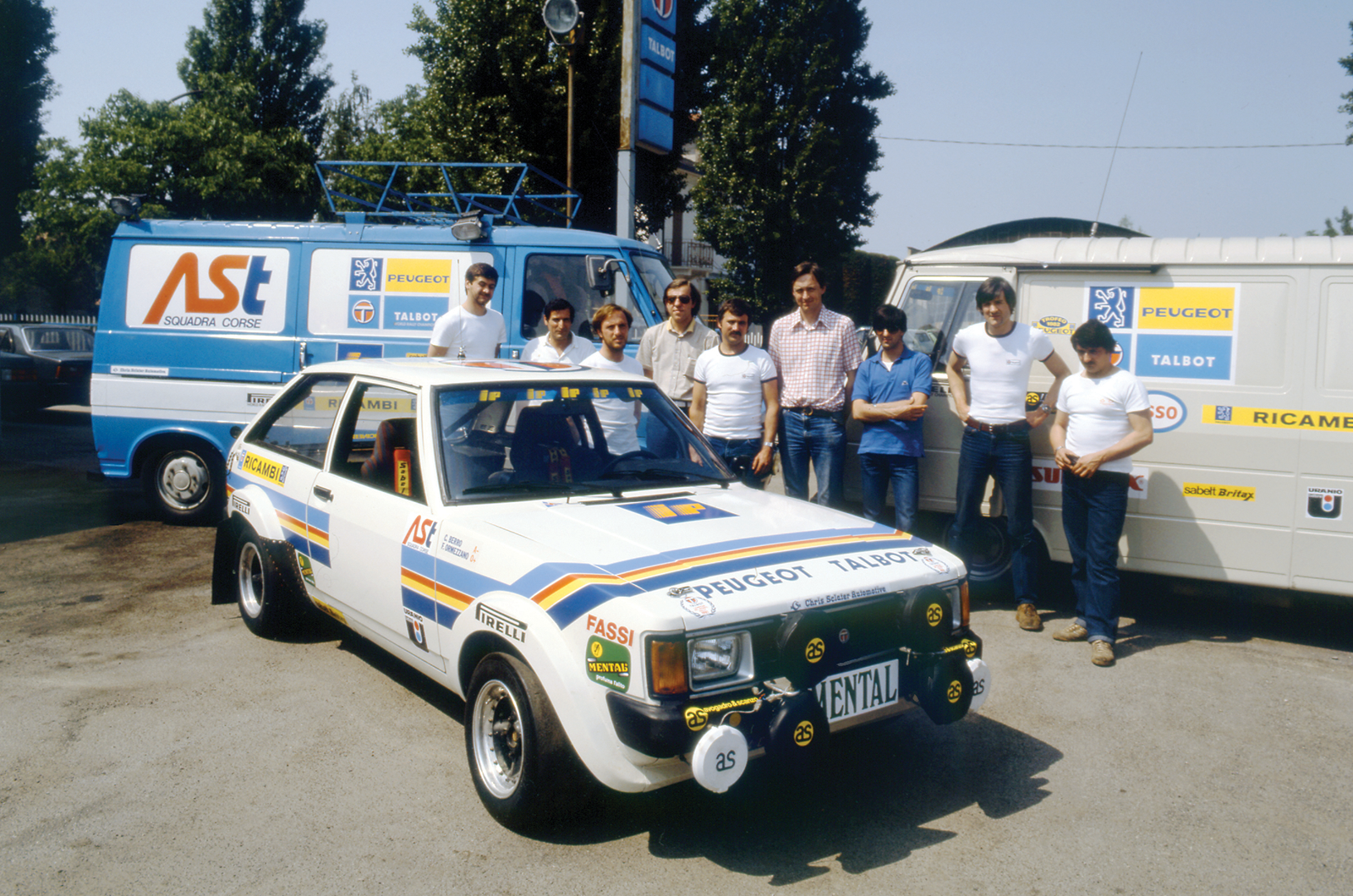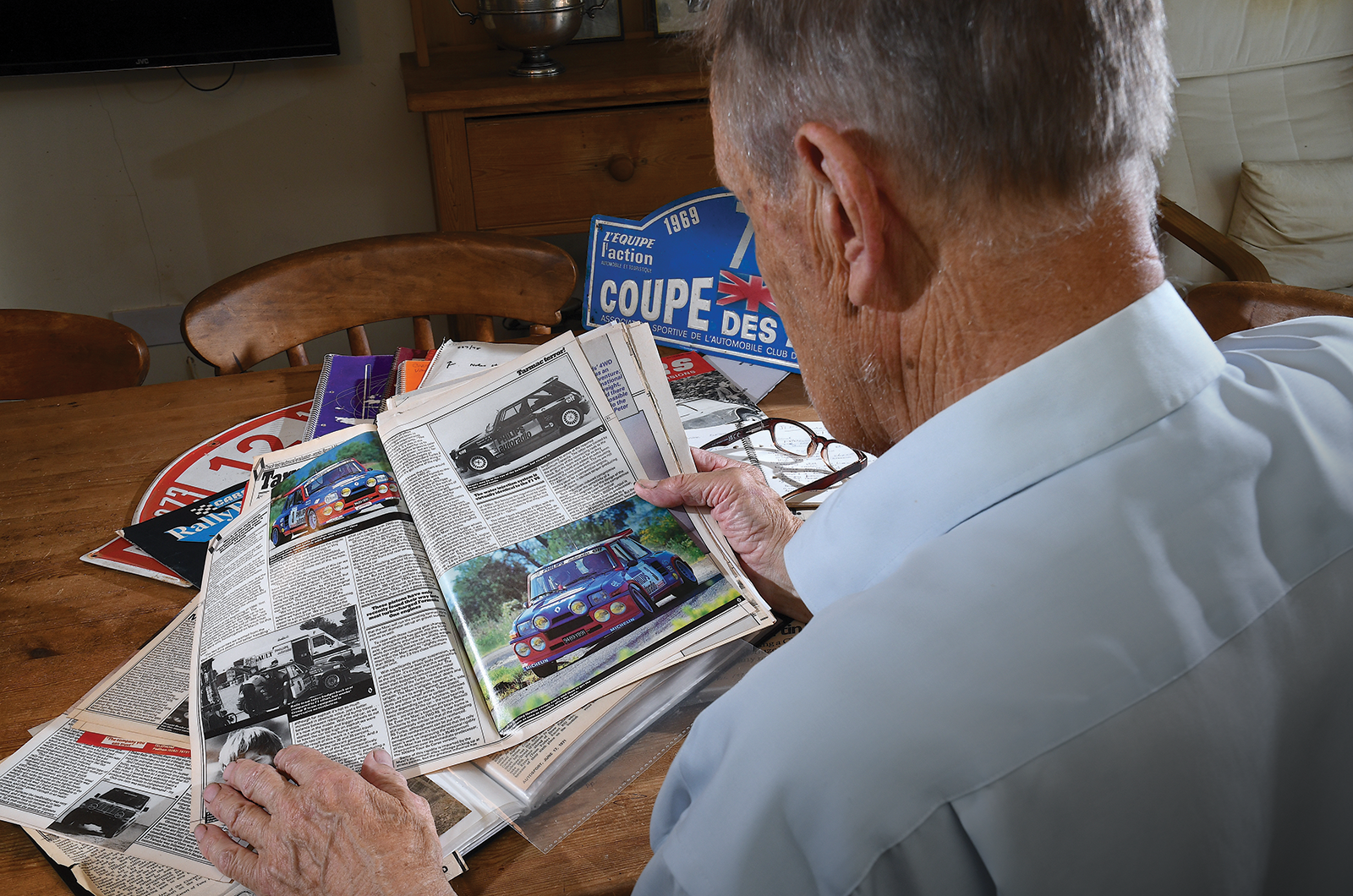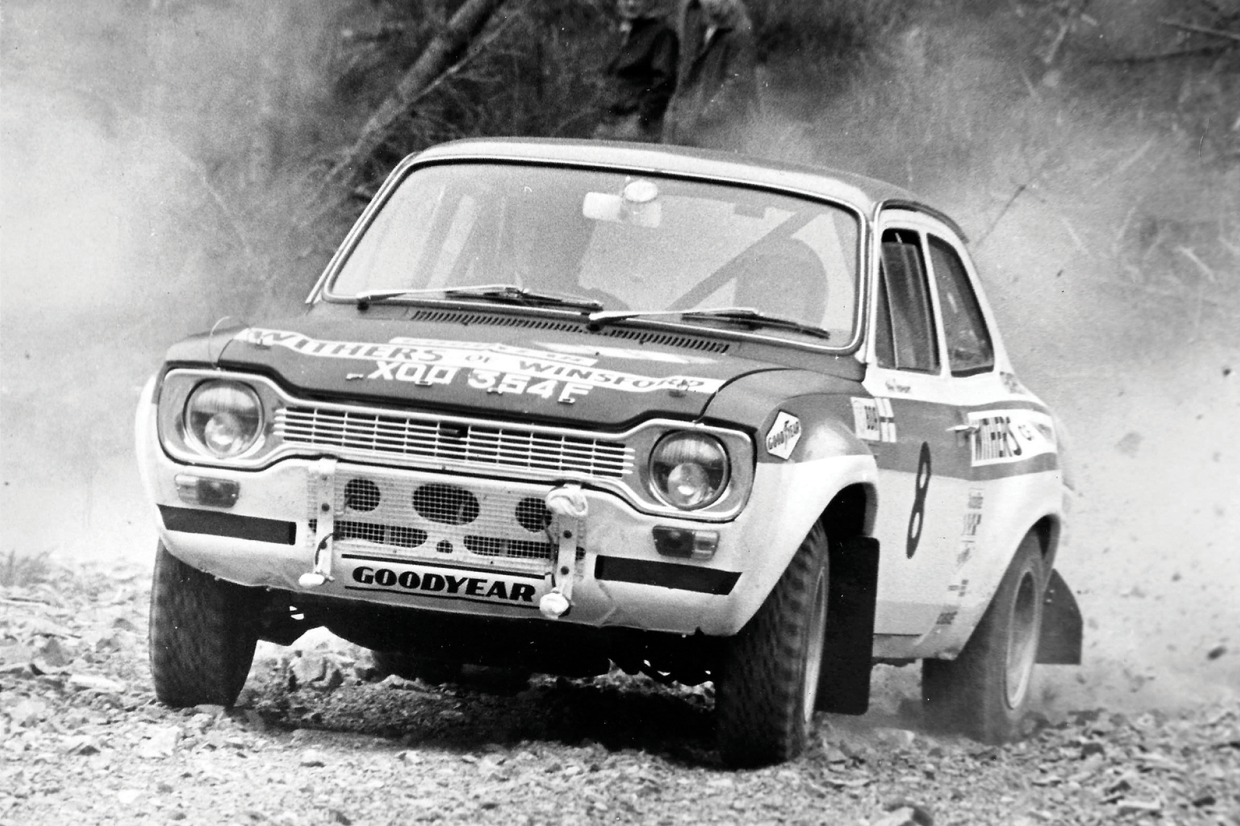
He won by crashing.
Chris Sclater is all smiles as he recalls an event that should have ended his motorsport career early; instead, it was amplified.
“It was on the 1969 Scottish International Rally,” he remembers.
“I was in my Lotus Cortina Mk1, which was a relatively old car, with Peter Valentine as co-driver.”
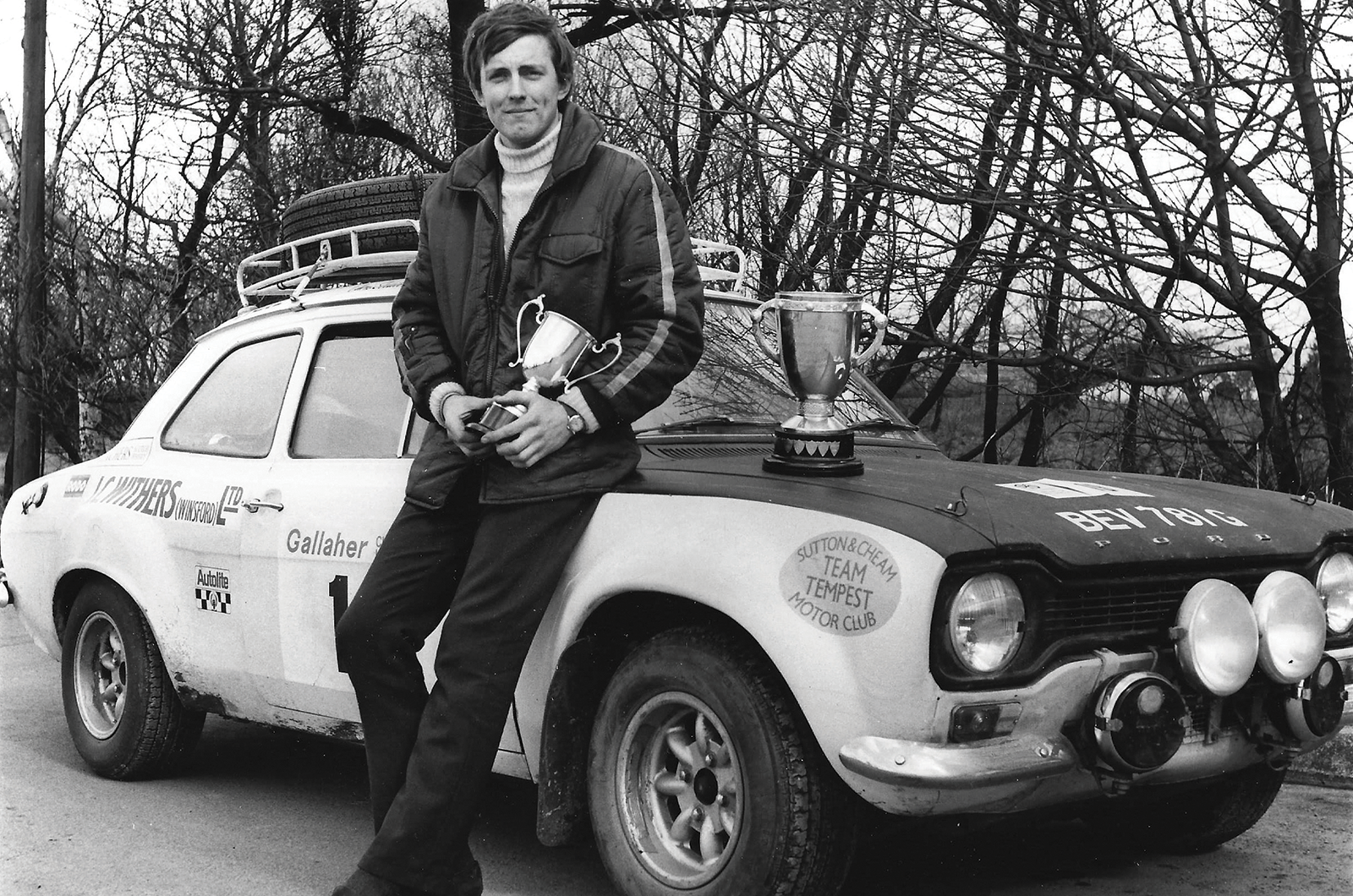
Chris Sclater with his ex-Hannu Mikkola Ford Escort Twin Cam at the Circuit of Ireland rally in 1970
“I was pretty inexperienced, but going well,” he continues. “We were on the second stage of day two at the top end of Loch Long.
“I don’t think I was trying too hard, but there was a long, fast left-right kink and we didn’t make the right part.
“The car understeered and off we went down a 60ft drop. The car landed on its roof, but we were okay.
“Then a few days later I had the phone call that changed my life. Bill Barnett, the Ford Competition Department rally manager, asked if I would meet him for a chat.”
What Chris neglects to mention is that he had been leading the event at the time, with works Saab man Simo Lampinen his nearest challenger prior to the off and the field comprising Roger Clark, Brian Culcheth and Tony Fall.

